Conversational Commerce: Benefits, Use Cases, Strategies
Conversational commerce transforms customer interactions, offering personalized experiences through messaging apps, chatbots and voice assistants, driving sales while enhancing engagement.
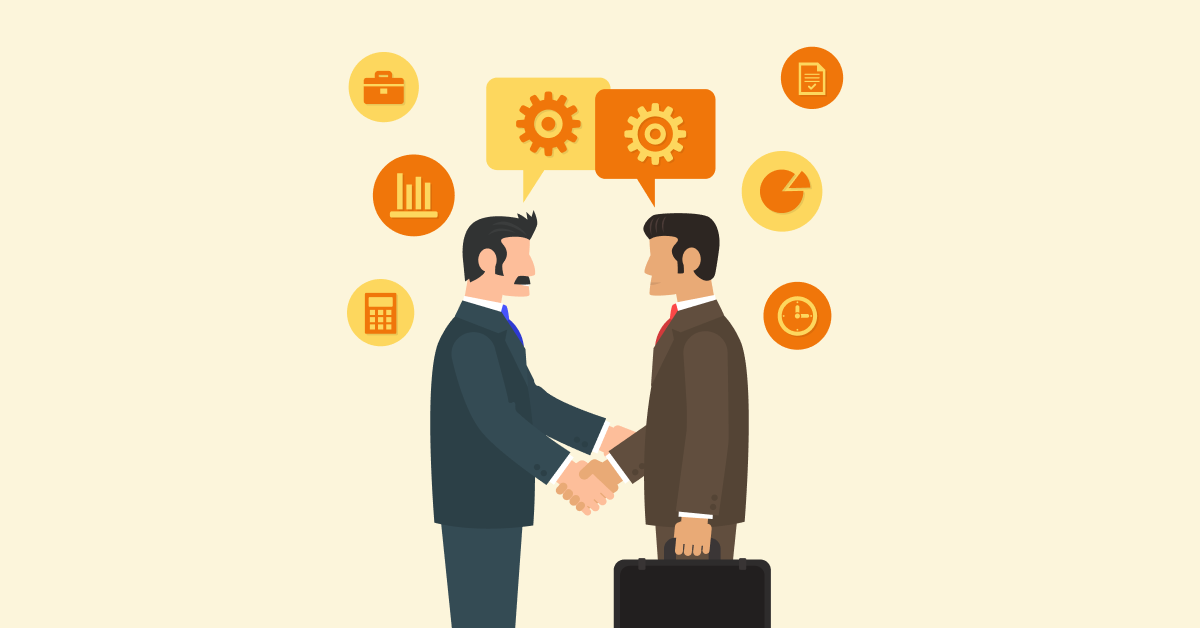
The technology that has revolutionized the way we interact and conduct business. One such emerging trend is “conversational commerce,” which involves using messaging apps, chatbots, and voice assistants to facilitate seamless transactions.
As more consumers seek personalized experiences, businesses are tapping into the trend to enhance customer engagement. Conversational commerce is quickly becoming a game-changer in the world of e-commerce with a 10% increase in revenue in the first 6 months of its application!
We will explore the concept of conversational commerce, its advantages and the importance of adapting to the new trend in the evolving world of e-commerce.
Conversational commerce is the integration of messaging apps, chatbots and other communication channels into the shopping experience. It involves using these communication tools to facilitate conversations between businesses and customers, allowing for a more personalized, convenient as well as interactive shopping experience.
This technological shift represents a fundamental evolution in e-commerce, moving from traditional product browsing to relationship-focused interactions. By simulating human conversation through digital channels, businesses create more engaging customer journeys that drive satisfaction and ultimately, increased sales.
Key elements:
Do you know? 49% of the customers prefer to spend more on the brand that gives them a message option to interact with rather than a call! Here’s the list you can try.
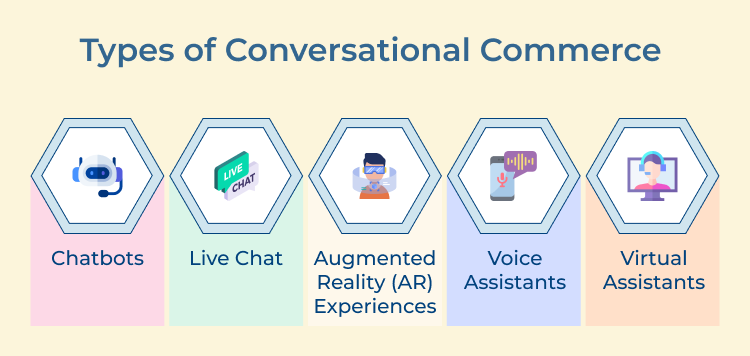
With the global spending of conversation commerce channels being equivalent to $290 billion by 2025! Let’s explore a few of the benefits and how it’s booming right now.

As per insiders report, messaging usually drives a 30% increase in spending as well as higher customer satisfaction. So, if you’re interested in getting started, here are some steps to take:
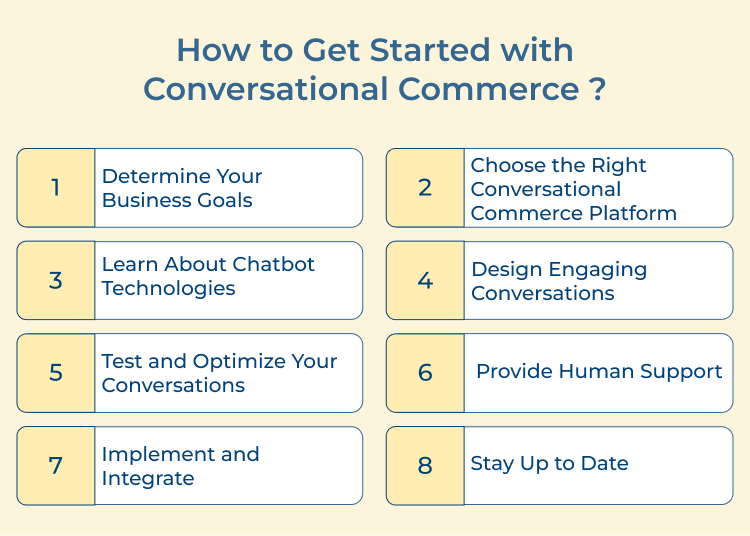
Before implementing conversational commerce, it’s crucial to identify your business goals. Are you looking to increase sales, improve customer engagement, or reduce customer support costs? Having a clear objective will help you align your conversational commerce strategy accordingly. Define key performance indicators (KPIs) to measure the success of your efforts, such as conversion rate, customer satisfaction or average order value.
Tips to consider:
Once you have identified your use cases, it’s time to select a platform that will enable you to implement conversational commerce effectively. There are several platforms available, each with its own set of features and integrations. Some popular options include Omni24.ai, Many Chat and Mobile Monkey. Research these platforms and choose the one that aligns with your business requirements.
Tips to consider:
Chatbots play a crucial role in conversational commerce by automating conversations and providing instant responses to customer queries. Familiarize yourself with different chatbot technologies like rule-based chatbots and AI-powered chatbots. Understand their capabilities, limitations, and how they can be integrated into messaging apps.
Tips to consider:
Creating engaging and interactive conversations is the key to successful conversational commerce. Craft compelling dialogue flows and make use of multimedia elements like images, videos, GIFs, etc. to enhance the user experience. Focus on providing value to your customers and delivering seamless interactions that drive sales as well as build brand loyalty.
Tips to consider:

Once you’ve built your chatbot as well as implemented your strategy, it’s important to continuously test and optimize your conversations. Monitor user interactions, gather feedback and analyze data to identify areas for improvement. Pay attention to user sentiment, response accuracy and conversion rates. By fine-tuning your chatbot while also enhancing the overall conversational experience, you ensure better customer satisfaction and increased conversions.
Tips to consider:
While chatbots are powerful tools, there will always be scenarios where human intervention is necessary. Train your customer support team to seamlessly take over conversations when needed. The human touch adds a personal element to the conversation and reassures customers that their needs are being heard as well as addressed.
Tips to consider:
Once you have a functional chatbot or conversational interface, implement it on your website, mobile app, social media, or messaging platform. Integrate it with other systems such as CRM, marketing automation and analytics to ensure a seamless customer experience.
Tips to consider:
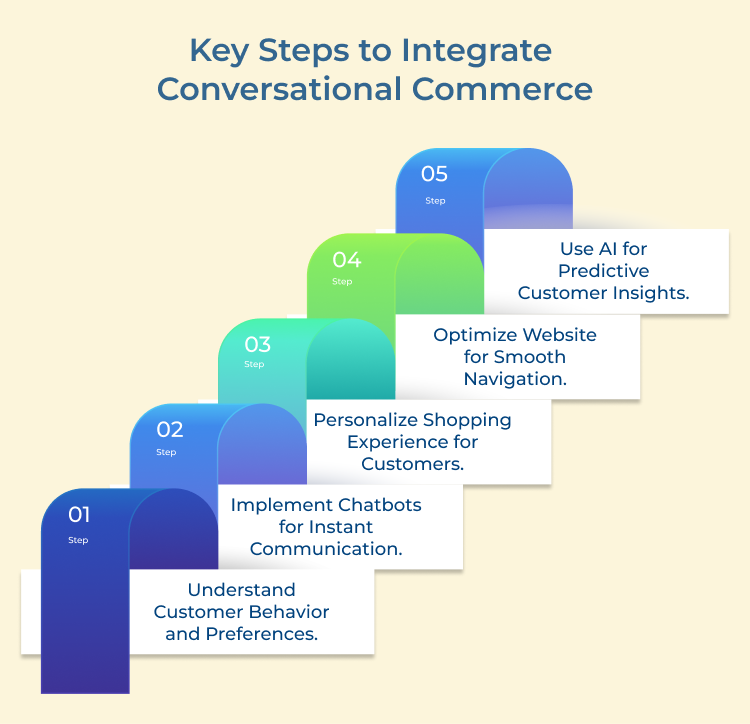
Staying up to date with the latest trends and technologies is vital, especially when it comes to business. Attend webinars, read industry blogs and join online communities to keep yourself informed about the ever-evolving landscape of conversational commerce.
Tips to consider:
The use of chatbots in commercial transactions allows businesses to engage with their customers in real-time, providing personalized and interactive shopping experiences.
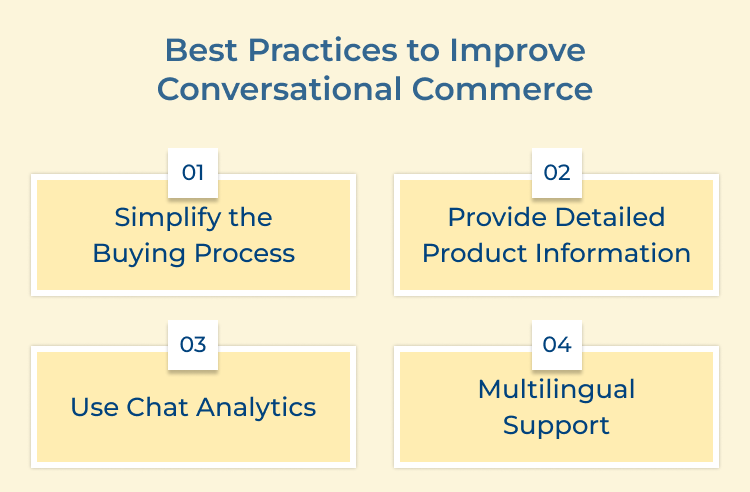
Here are some best practices to consider:
Conversational commerce relies on various metrics to measure the performance and effectiveness of the conversational interface.
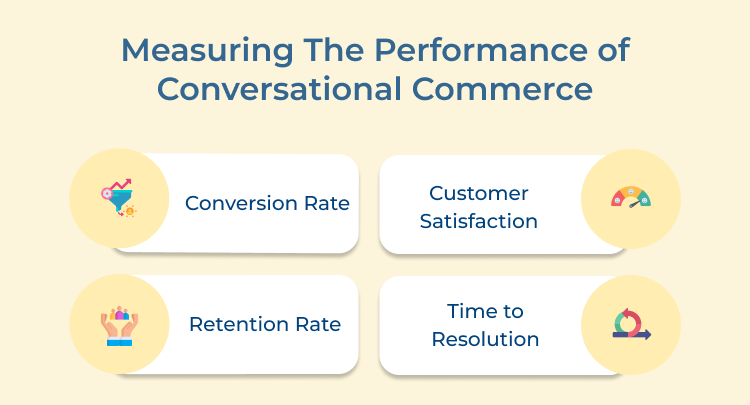
Conversational commerce is a rapidly evolving field that requires a high level of technical expertise and investment to overcome these challenges.
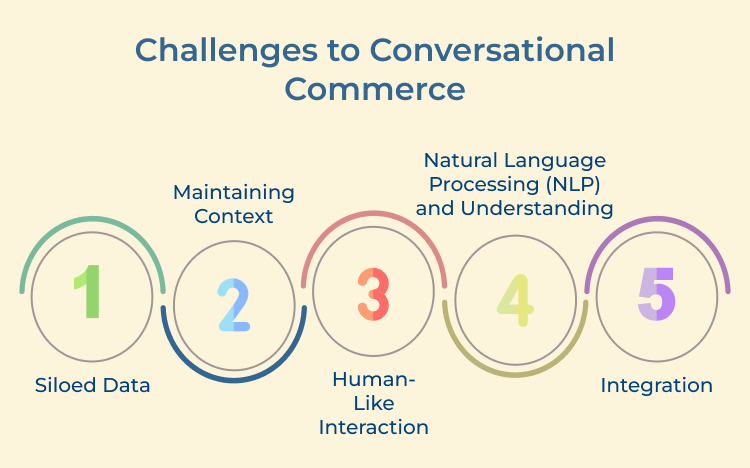
Conversational commerce is revolutionizing the way businesses engage with their customers. Delve into some of it’s cases and learn how conversation-based interactions drive growth.
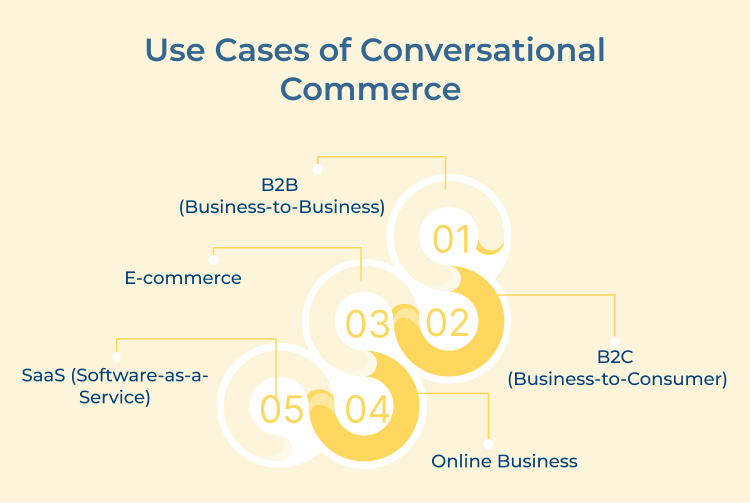
Conversational commerce is not limited to just B2C interactions; it also plays a vital role in B2B transactions. Businesses leverage chatbots or messaging platforms to automate customer support, order processing and inventory management. By integrating conversational commerce tools into their systems, companies enhance communication efficiency, reduce response time and provide personalized experiences to their B2B clients.
For instance, a B2B company selling industrial machinery utilizes a chatbot to assist customers in product selection, pricing inquiries and even facilitate the ordering process. Scaling the operations and delivering seamless experience becomes easy with conversational commerce integration.
Conversational commerce has become increasingly prevalent in B2C interactions, transforming the way consumers interact with brands. Chatbots, voice assistants, and messaging platforms allow businesses to engage with customers in real-time, addressing their queries, providing recommendations, while also facilitating purchases.
In the e-commerce sector, conversational commerce enables personalized product recommendations based on customer preferences and previous purchase history. As a business, you can provide tailored suggestions and guide through customer’s buying journey when you utilize conversational AI to analyze customer data. The conversational approach enhances customer engagement and improves overall satisfaction levels.
Conversational commerce has found a natural fit within the e-commerce landscape. Incorporate chatbots and virtual shopping assistants to create a more immersive shopping experience for customers. These chatbots will help customers find products, inform product’s availability and assist with the checkout process.
Conversational commerce aid in reducing cart abandonment rates. Proactively engaging with customers during their shopping journey enables businesses to offer personalized discounts, product recommendations and address any concerns in real-time. The immediacy leads to higher conversion rates and improved customer loyalty.
Conversational commerce greatly benefits online businesses by leveraging messaging platforms, chatbots, or live chat features. These tools enable businesses to provide real-time customer support, answer pre-sale inquiries and resolve any issues promptly.
For SaaS (Software-as-a-Service) companies, conversational commerce enhances onboarding processes by guiding users through product demonstrations, answering questions and facilitating trial conversions. The personalized engagement helps in building customer trust and ensures a smooth user experience.
SaaS businesses significantly benefit from conversational commerce by integrating chat features into their platforms. It allows customers to seek help, report issues, or request additional features without leaving the software environment.
For instance, a project management SaaS platform incorporates a chatbot that assists users in setting up projects, assigning tasks and tracking progress. The conversational approach simplifies user interaction and improves overall customer satisfaction.
As technology continues to evolve, so do consumer preferences. People are seeking more personalized and convenient shopping experiences. Conversational commerce, the intersection of messaging apps and online shopping, offers a unique solution to this demand. It allows businesses to engage with customers in real-time, offering personalized recommendations and assistance, leading to higher conversion rates as well as increased sales.
Conversational commerce can be a powerful tool for businesses looking to improve customer service, increase sales and gather valuable data about their customers. It’s important to remember that conversational commerce is a continuous process and requires constant monitoring, testing while also refining to provide the best possible customer experience.
How to start with conversational commerce?
Starting with conversational commerce requires a few key steps. You need to choose a platform or messaging app that aligns with your target audience, such as Facebook Messenger or WhatsApp. Integrate a chatbot or virtual assistant into that platform to automate responses. Optimize your content and messages to engage as well as convert customers effectively.
What is the benefit of conversational commerce?
Conversational commerce offers several benefits for businesses. It enables personalized interactions with customers, enhancing their overall experience. It can automate customer support, reducing response time while increasing efficiency. Conversational commerce has proven to boost sales and conversions by guiding customers through the purchasing journey in real-time.
What is conversational commerce vs. social commerce?
Conversational commerce and social commerce are two related but distinct concepts. Conversational commerce focuses on using messaging platforms or chatbots to interact with customers and drive sales. Social commerce refers to selling products directly through social media platforms, utilizing features like buy buttons or shoppable posts.
How does conversational commerce work?
Conversational commerce works by utilizing artificial intelligence and natural language processing to engage in interactive conversations with customers. Chatbots or virtual assistants are programmed to understand customer queries and provide relevant information. By mimicking human-like conversations, conversational commerce aims to create a seamless and personalized buying experience.
What are examples of conversational commerce?
Several companies have successfully implemented conversational commerce strategies. For instance, 1-800-Flowers allows customers to place orders through Facebook Messenger or Google Assistant. Sephora utilizes a chatbot on its website and app to provide makeup tips as well as recommend products based on individual preferences. These examples showcase the versatility and effectiveness of conversational commerce in different industries.